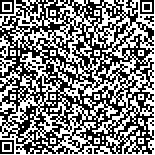| 本文已被:浏览 2118次 下载 1685次 |

码上扫一扫! |
|
|
| 海绵和海鞘中可培养放线菌的分离与多样性比较 |
|
杨 琪1,2,3, 信艳娟4, Christopher FRANCO2,3, 柯才焕1, 张 卫1,4,2,3
|
|
1.厦门大学 海洋与地球学院;2.Flinders Centre for Marine Bioproducts Development;3.Department of Medical Biotechnology,School of Medicine, Flinders University;4.中国科学院 大连化学物理研究所海洋生物产品工程实验室
|
|
| 摘要: |
| 在相同的分离培养条件下, 为比较地域差别较大的福建海域海绵动物(山海绵Mycale sp.和网架海绵Stylissa sp.)和海南海域海鞘动物(皱瘤海鞘Styela plicata 和乳突皮海鞘Molgula manhattensis)之间可培养放线菌多样性的差异, 作者采用5 种放线菌分离培养基和1 种细菌通用培养基, 对海绵和海鞘中的放线菌进行分离培养。采用16S rRNA 基因限制性片段长度多态性(Restriction Fragment LengthPolymorphism, RFLP)分析和序列分析, 揭示其多样性。共获得可培养放线菌198 株, 其中从海绵中分离到87 株放线菌, 从海鞘中分离到111 株放线菌。RFLP 分析表现为38 种不同的图谱类型。16S rRNA基因序列分析表明, 从海绵中分离到的放线菌包括6 个放线菌属, 其中有2 株菌的16S rRNA 基因序列与最相近的菌株相似性低于97%, 可能是潜在的新菌株; 从海鞘中分离到的放线菌包括7 个放线菌属,有8 株可能是潜在的新菌株。比较海绵和海鞘中可培养放线菌的多样性发现, 从海绵中分离到的放线菌, 除节细菌(Arthrobacter)以外, 均包括在海鞘分离的放线菌属中。海鞘相关放线菌多样性水平不容忽视, 是除海绵之外另一获得新型放线菌资源以及药用天然活性产物的重要来源。 |
| 关键词: 山海绵(Mycale sp.) 皱瘤海鞘(Styela plicata) 放线菌 RFLP 16S rRNA 基因 |
| DOI: |
| 分类号: |
| 基金项目:海洋公益性行业科研专项经费资助项目(No.201305016) |
|
| Comparative study on the phylogenetic diversity of culturable actinobacteria associated with marine sponges and ascidians in six isolation media |
|
|
| Abstract: |
| The diversity of culturable actinobacteria was investigated and compared between two sponges (Mycale sp. and Stylissa sp.) collected from Fujian province and two ascidians (Styela plicata and Molgula manhattensis) collected from Hainan province under the same isolation condition. Five actinobacteria selective isolation media and one general bacteria isolation medium were selected to isolate and culture actinobacteria from both sponges and ascidians. The phylogenetic affiliation of the actinobacterial isolates was assessed using a combination of 16S rRNA gene amplification-restriction fragment length polymorphism (RFLP) analysis and 16S rRNA gene sequencing. A total of 198 purified actinobacteria were cultivated, including 87 from sponges and 111 from ascidians. There are 38 different RFLP patterns and the phylogenetic analysis based on sequencing results reveal a high and distinctive diversity of actinobacteria associated with these two sponge species and two ascidian species, including six and seven actinomycetes genera, respectively. The BLAST results show that two actinobacterial isolates derived from sponges are probably novel strains whose similarity are lower than 97%, whereas there are eight isolates from ascidians regarded as potential novel actinobacteria. Comparing the diversity of actinobacteria associated with sponges and ascidians, most genera from sponge are also found in ascidians except Arthrobacter. The diversity of ascidian-associated actinobacteria is high and cannot be underestimated. Together with sponges, ascidians are also excellent and promising sources for novel marine actinobacteria currently under exploited for the discovery of new bioactive marine natural products. |
| Key words: sponge ascidian actinobacteria RFLP 16S rRNA gene |
